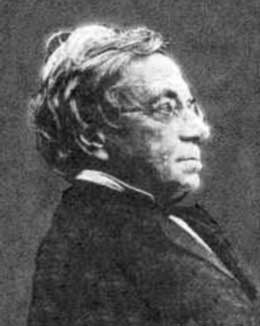

تاريخ الرياضيات

الاعداد و نظريتها

تاريخ التحليل

تار يخ الجبر

الهندسة و التبلوجي


الرياضيات في الحضارات المختلفة

العربية

اليونانية

البابلية

الصينية

المايا

المصرية

الهندية


الرياضيات المتقطعة

المنطق

اسس الرياضيات

فلسفة الرياضيات

مواضيع عامة في المنطق


الجبر

الجبر الخطي

الجبر المجرد

الجبر البولياني

مواضيع عامة في الجبر

الضبابية

نظرية المجموعات

نظرية الزمر

نظرية الحلقات والحقول

نظرية الاعداد

نظرية الفئات

حساب المتجهات

المتتاليات-المتسلسلات

المصفوفات و نظريتها

المثلثات


الهندسة

الهندسة المستوية

الهندسة غير المستوية

مواضيع عامة في الهندسة

التفاضل و التكامل


المعادلات التفاضلية و التكاملية

معادلات تفاضلية

معادلات تكاملية

مواضيع عامة في المعادلات


التحليل

التحليل العددي

التحليل العقدي

التحليل الدالي

مواضيع عامة في التحليل

التحليل الحقيقي

التبلوجيا

نظرية الالعاب

الاحتمالات و الاحصاء

نظرية التحكم

بحوث العمليات

نظرية الكم

الشفرات

الرياضيات التطبيقية

نظريات ومبرهنات


علماء الرياضيات

500AD

500-1499

1000to1499

1500to1599

1600to1649

1650to1699

1700to1749

1750to1779

1780to1799

1800to1819

1820to1829

1830to1839

1840to1849

1850to1859

1860to1864

1865to1869

1870to1874

1875to1879

1880to1884

1885to1889

1890to1894

1895to1899

1900to1904

1905to1909

1910to1914

1915to1919

1920to1924

1925to1929

1930to1939

1940to the present

علماء الرياضيات

الرياضيات في العلوم الاخرى

بحوث و اطاريح جامعية

هل تعلم

طرائق التدريس

الرياضيات العامة

نظرية البيان
Johann Jakob Balmer
المؤلف:
C L Maier
المصدر:
Biography in Dictionary of Scientific Biography
الجزء والصفحة:
...
13-11-2016
438
Died: 12 March 1898 in Basel, Switzerland

Johann Balmer's father was also named Johann Jakob Balmer and he was a Chief Justice. Johann's mother was Elizabeth Rolle Balmer. Johann was the eldest of his parents sons. He attended his first school in Liestal, a town which had just become the capital of the half canton of Basel-Landschaft. Then, for his secondary education, he studied at a school in Basel where he excelled in mathematics and decided to study that topic at university.
For his university studies in mathematics Balmer attended the University of Karlsruhe and the University of Berlin. His course of studies led to a doctorate which he received from the University of Basel in 1849 for a dissertation on the cycloid.
Balmer taught in Basel all his life. From 1859 until his death in 1898 he was a school teacher of mathematics at a secondary school for girls in the city. From 1865 until 1890 he was also a university lecturer in mathematics at the University of Basel where his main field of interest was geometry. He married Christine Pauline Rinck in 1868 when he was 43 years old and they had six children.
However, despite being a mathematics teacher and lecturer all his life, Balmer is best remembered for his work on spectral series and his formula, given in 1885, for the wavelengths of the spectral lines of the hydrogen atom. This was set out in one of only two papers which he wrote on spectra of the elements, the second being in 1897. It is surprising to realise that Balmer was sixty years old when he wrote the paper for which he is famous on the spectral lines of the hydrogen atom and that he was seventy-two when he wrote his only other work on this topic. But for his work on what amounts to a problem in physics, Balmer would be unknown today within the history of mathematics since he made no contribution to geometry of special significance despite it being the topic of interest throughout his life.
The major contribution which Balmer made, however, depended much more on his mathematical skills than on his understanding of physics, for he produced a formula which gave the wavelengths of the observed lines produced by the hydrogen atom without giving any physical explanation. Balmer's famous formula is
λ = hm2/(m2 - n2).
Putting n = 2 and h = 3654.6 × 10-8 cm, the wavelengths given by the formula for m = 3, 4, 5, 6 were correct to a high degree of accuracy. Previous attempts had looked for formulae of quite different types and had failed to come up with anything which matched the experimental evidence. Putting m = 7 gave Balmer a predicted value for the next line and indeed a colleague at the University of Basel was able to tell Balmer that this line had been observed and the wavelength agreed with a high level of accuracy with the one Balmer's formula predicted.
In his paper of 1885 Balmer suggested that giving n other small integer values would give the wavelengths of other series produced by the hydrogen atom. Indeed this prediction turned out to be correct and these series of lines were later observed. The reason why the formula holds was not understood in Balmer's lifetime and had to wait until the theoretical work of Niels Bohr in 1913.
Balmer's formula led to more general formulae for the spectral lines of other atoms. Others who, basing their ideas on those of Balmer, were able to achieve such results included Rydberg, Kayser and Runge.
Articles: